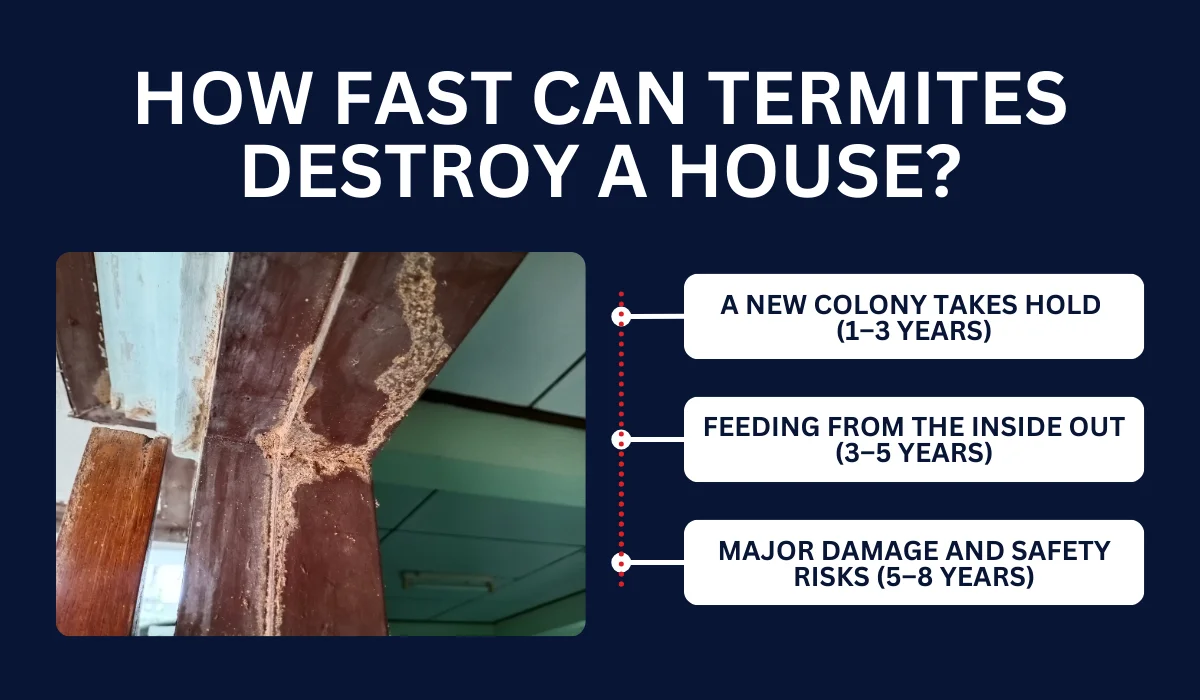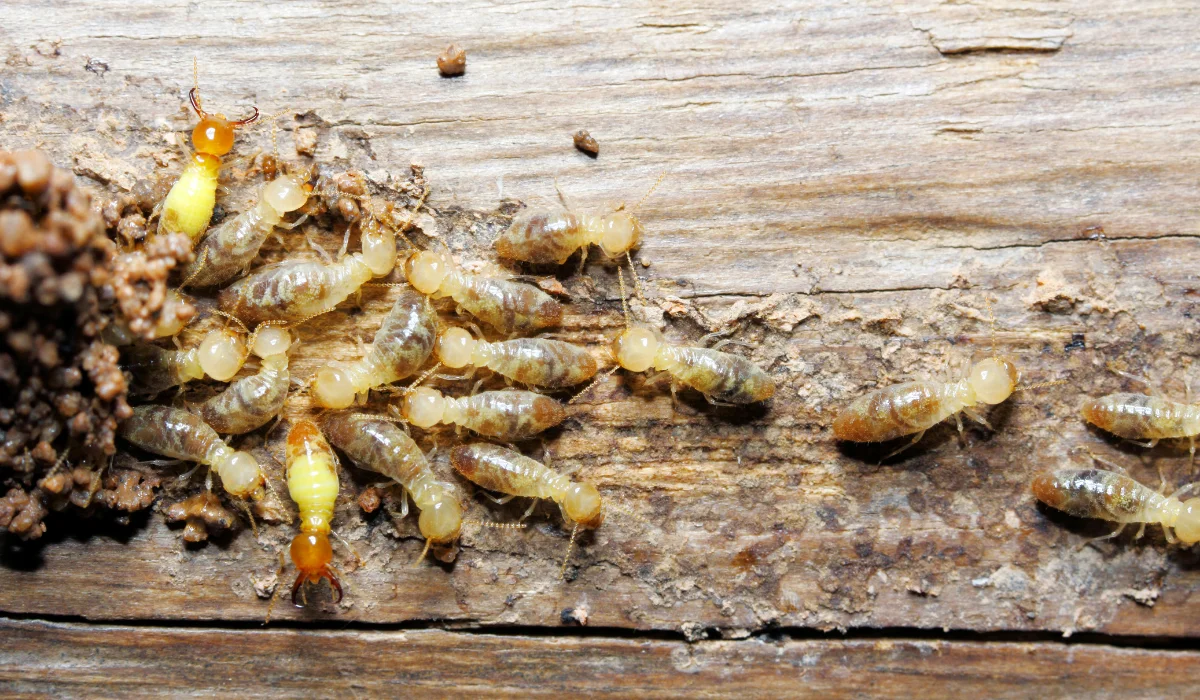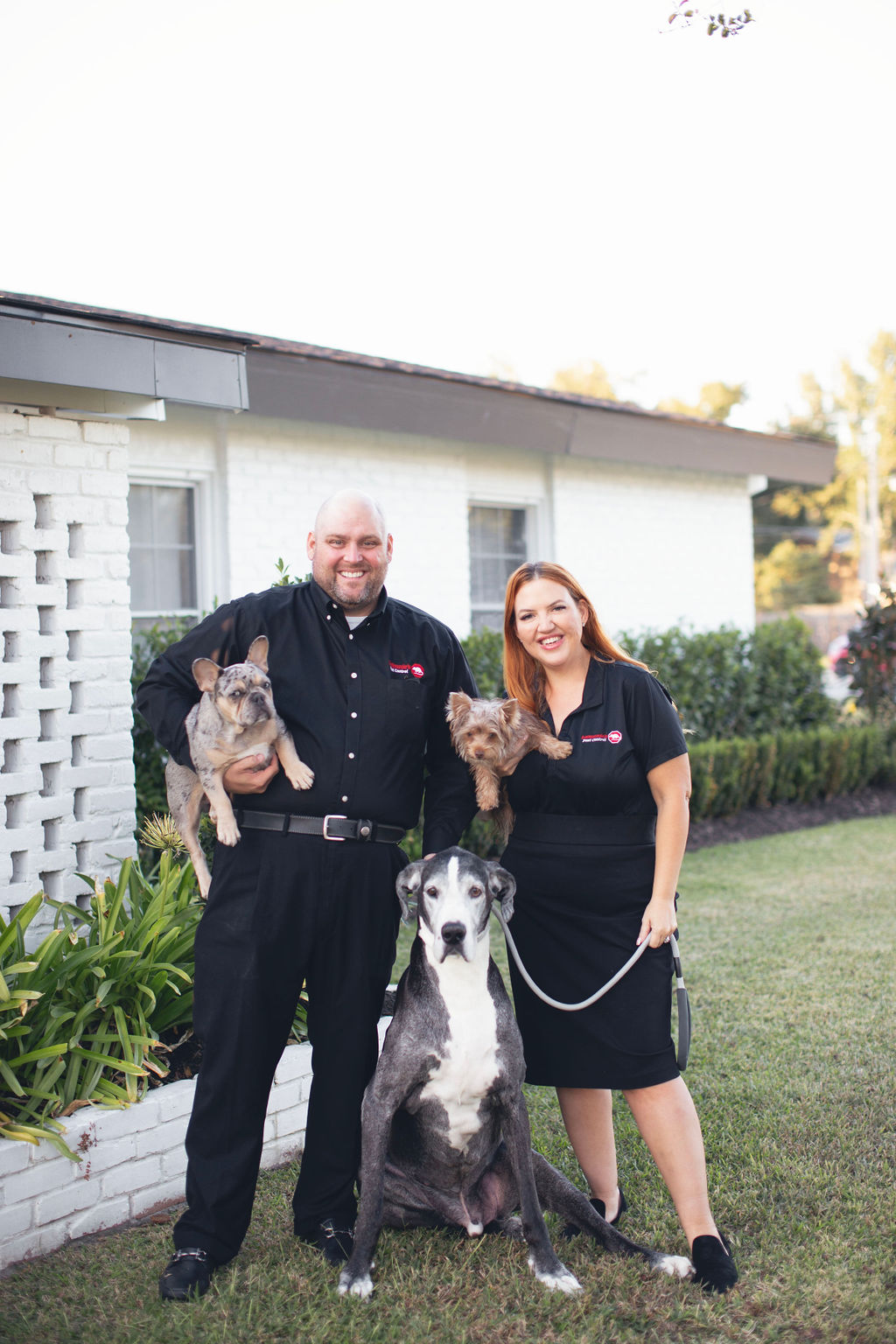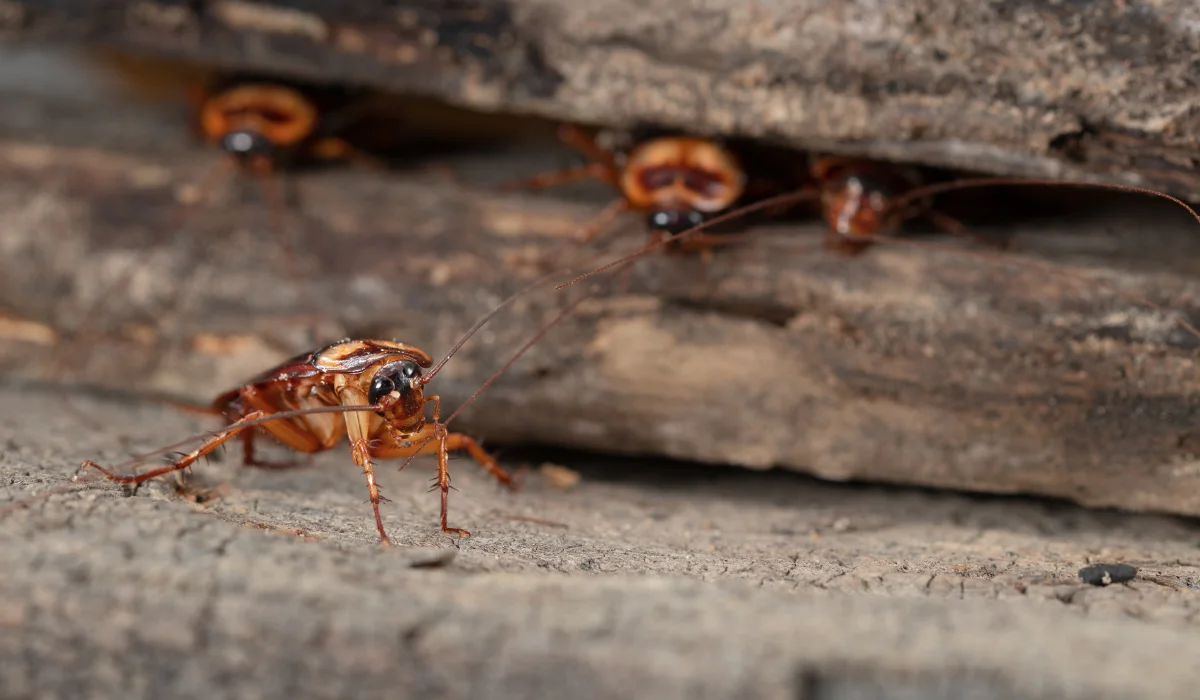Repairing termite damage can be a significant expense, ranging from $1,000 to $10,000, with a national average of $3,000. The most serious and expensive repairs involve structural issues in the home.
Termites might be small, but the damage they cause can hit your home hard and fast. In Louisiana, with our heat, humidity, and wooden structures built near the ground, the risk of a termite infestation is high year-round.
Homeowners here are especially at risk for subterranean termites and aggressive species, which can chew through your home like it’s a buffet.
So, how fast can termites do real damage?
Let’s break it down by stage and what it means for your home’s structural integrity.
Key Takeaways
• A termite problem usually starts small and quiet, but can spread fast before you ever notice the damage.
• Mature colonies eat through wood around the clock and can seriously weaken floors, walls, and other structures.
• Visible signs like droppings, mud tubes, and soft wood often show up after damage has already been done.
• Professional pest control with routine inspections is the safest way to protect your home from costly repairs.
How Fast Can Termites Destroy a House?

The short answer: faster than you think, especially in our hot, humid Louisiana weather. Formosan termites feed more aggressively on moist wood, and warm temperatures speed them up even more.
In the right conditions, a mature colony can chew through a foot of a 2×4 in under a month. When you’ve got thousands of termites working nonstop, that kind of damage adds up fast.
Here’s what wood damage can look like over time if you don’t get ahead of the problem.
Stage 1: A New Colony Takes Hold (1–3 Years)
Everything starts with swarmers, the winged termites you might see fluttering around after a warm rain. These swarmers pair off to start a new colony, often near a food source like rotting wood or moist soil around your foundation or crawl space. They look for small cracks in your slab or access through weep holes in your brick veneer.
Early on, there’s minimal termite activity, and the size of the colony is small.
But don’t be fooled, this is when they’re laying the groundwork. A termite inspection during this phase might not turn up much, but that’s why regular inspections are one of the most important preventive measures you can take.
And if we’re talking about subterranean termites or a new colony of Formosans?
You’re dealing with some of the fastest-spreading types of termites in the country.
Stage 2: Feeding from the Inside Out (3–5 Years)
Once the colony becomes a mature colony, the termites begin to eat wood in earnest. Termites consume cellulose, which is found in everything from studs and beams to baseboards and furniture. These pests work from the inside out, which is why termite damage is often invisible until it’s already serious.
At this point, the termite problem is no longer small.
A large colony can do some extensive damage, especially if it’s undisturbed and has access to moisture. You might start seeing droppings, hollow-sounding walls, or mud tubes running up your foundation, classic signs of termite infestation.
The average home has about 1,500 square feet of wooden materials vulnerable to feeding. That means even a single colony can cause structural damage that leads to expensive repair costs.
Stage 3: Major Damage and Safety Risks (5–8 Years)
When left untreated, termite colonies reach their peak and begin causing serious damage. Wooden support beams can be hollowed out.
Walls, floors, and ceilings may start to sag or buckle. In some cases, homeowners discover termites only after their contractor finds significant damage during a remodel.
In Louisiana, it’s not uncommon for homes with both termite and water damage to suffer even faster deterioration. That moisture softens the wood, making it even easier for termites to tear through.
This is also the stage where you’ll likely see visible signs of termite damage, like warped doors and windows or bubbling paint.
Depending on the species of termite, the feeding rate can vary.
But for large colonies of subterranean or Formosan termites, significant damage can happen in just a few years. That’s why termite control isn’t optional down here; it’s essential.
Stop Termites Before They Wreck Your Home
DIY solutions won’t stop a full colony. You need professional pest management and termite treatment plans that include routine termite inspection, physical barriers, and targeted bait systems.
At LaJaunie’s Pest Control, we offer eco-friendly, professional termite prevention and control services built for Louisiana homes.
From drywood termites hiding in your attic to massive subterranean colonies tunneling under your foundation, our pest control services are designed to protect every square foot of your property.
With our Complete Protection Program, you’ll get:
• Ongoing termite treatment and pest control
• Annual inspections
• A termite-free guarantee with a transferable warranty
Need us fast? We offer same-day appointments and Saturday service.
Whether you’re in Thibodaux, Baton Rouge, or anywhere else in Southern Louisiana, we’ll help you catch the problem before it turns into serious damage.
Don’t wait until it’s too late, contact us now to schedule your termite inspection.
 By: LaJaunie's Pest Control
By: LaJaunie's Pest Control 



